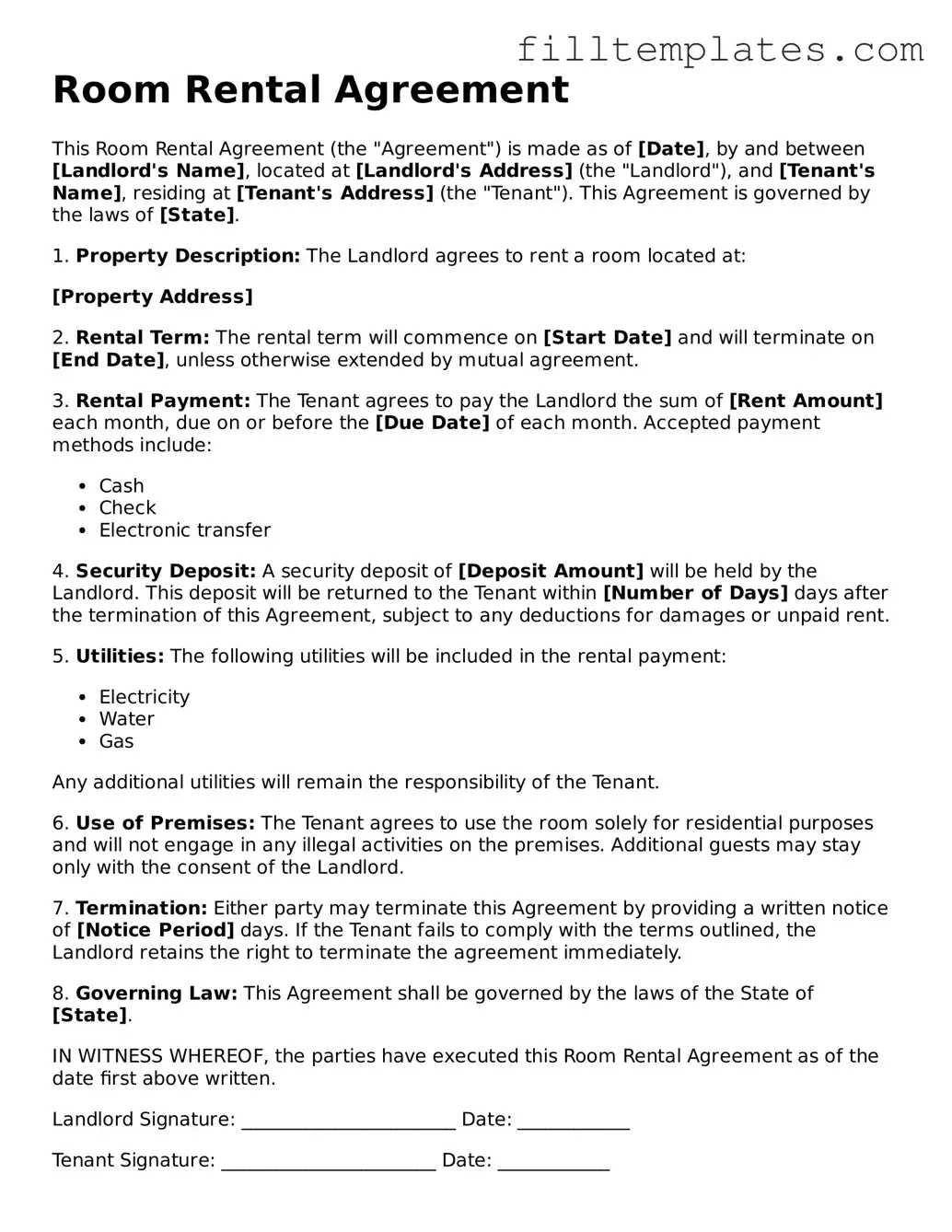Room Rental Agreement
This Room Rental Agreement (the "Agreement") is made as of [Date], by and between [Landlord's Name], located at [Landlord's Address] (the "Landlord"), and [Tenant's Name], residing at [Tenant's Address] (the "Tenant"). This Agreement is governed by the laws of [State].
1. Property Description: The Landlord agrees to rent a room located at:
[Property Address]
2. Rental Term: The rental term will commence on [Start Date] and will terminate on [End Date], unless otherwise extended by mutual agreement.
3. Rental Payment: The Tenant agrees to pay the Landlord the sum of [Rent Amount] each month, due on or before the [Due Date] of each month. Accepted payment methods include:
- Cash
- Check
- Electronic transfer
4. Security Deposit: A security deposit of [Deposit Amount] will be held by the Landlord. This deposit will be returned to the Tenant within [Number of Days] days after the termination of this Agreement, subject to any deductions for damages or unpaid rent.
5. Utilities: The following utilities will be included in the rental payment:
Any additional utilities will remain the responsibility of the Tenant.
6. Use of Premises: The Tenant agrees to use the room solely for residential purposes and will not engage in any illegal activities on the premises. Additional guests may stay only with the consent of the Landlord.
7. Termination: Either party may terminate this Agreement by providing a written notice of [Notice Period] days. If the Tenant fails to comply with the terms outlined, the Landlord retains the right to terminate the agreement immediately.
8. Governing Law: This Agreement shall be governed by the laws of the State of [State].
IN WITNESS WHEREOF, the parties have executed this Room Rental Agreement as of the date first above written.
Landlord Signature: _______________________ Date: ____________
Tenant Signature: _______________________ Date: ____________
